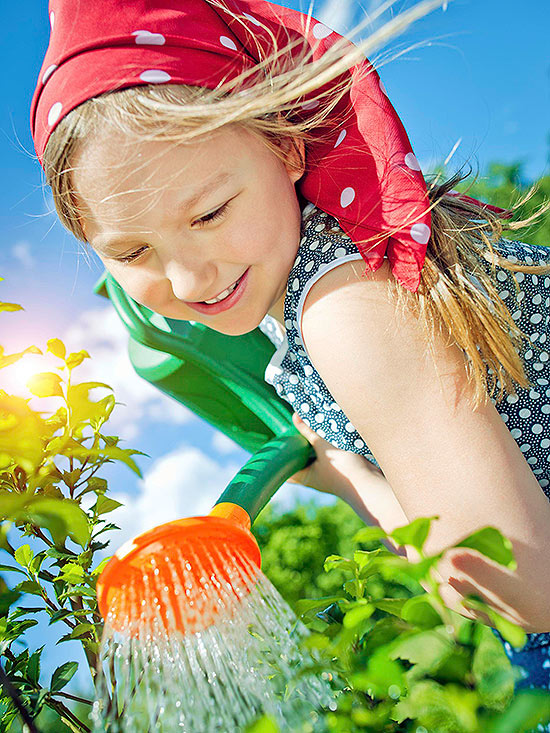
Buzzworthy
Bee populations are down around the globe — and that's everybody's beeswax. We depend on bees to pollinate many of the crops that feed us. What's causing the decline? Scientists have suggested pesticides, parasites (such as mites), poor nutrition, or some combination of these as factors. The good news: your family can do its part to help bees. Adding a cluster of bee-friendly flowers to your yard will allow the busy critters to gather more nectar in less time. With one easy summer project, you and your kids can show some love to Mother Nature, make your home prettier, and have a blast. No need to be a gardening guru, either! Read on to get it done in three easy steps.
Mind Your Bees
Certain flowering plants are particularly beloved by our flying friends, so that's the first thing to keep in mind when planning your garden. Flora that attract bees and will thrive in most parts of the United States include galllardia (or blanketflower, shown at right), rudbeckia (or black-eyed Susan), asters, and phlox. Perennial plants such as these blossom for years, so they're a great investment in the future of your bee sanctuary and your yard, but annuals can also be fine choices. Garden-center staffers can help you find bee-friendly full-sun varieties that are especially well suited to your region. Buy plants in groups of three or five for the greatest visual impact and maximum bee appeal.
Worried About Stings? Honey bees die after one sting, so using their stinger is something they try to avoid. Don't bother them, and they'll likely ignore you. If a bee lands on you, stand very still, and it will usually fly away. Also be aware that sweet stuff such as juice and ice pops can draw bees to you.
1. Follow the Sun
Spend a day observing how sunlight moves across your yard. Your new plants should go in the spot that catches at least six hours of sun a day. You can add the purchased plants to an already established garden in this sunny area, dig a new bed for them, or set up your sanctuary in soil-filled containers.
2. Gather Your Supplies
You will need:
Digging tools, such as trowels or small shovelsCompost or other soil-enriching amendmentsMulch made from shredded bark or chopped-up leavesWatering tools, such as a hose with a sprayer tip or a watering canPlants (see "Mind Your Bees," above)
3. Plant!
Arrange the flowers in your chosen spot, grouped by type and spaced as directed on their tags. Dig a hole for each plant, a bit deeper and wider than its container, and pour in some water. Remove the plant from its pot, scratch the soil and roots like you'd scratch a dog's head, and place the plant in its new home. Fill the dirt back in, adding compost as you go and tamping it down so that the plant stands upright. Cover the planting area and nearby soil with two inches of mulch, leaving about an inch of uncovered space around each stem. Water the plants consistently for two weeks in the early morning or evening (unless it rains), following any specific instructions on the plant tags.

Add a Bee Watering Hole
Fill a plant saucer with large rocks, then add water. Along with the heady scent of flowers, the moisture will attract bees and help your sanctuary come alive. If your region is prone to mosquitos, change the water weekly.
Singer-songwriter Dar Williams tours summer camps to plant gardens and teach kids about bee issues. Learn more at campsandbeegardens.tumblr.com.
Originally published in the May 2013 issue of FamilyFun.
